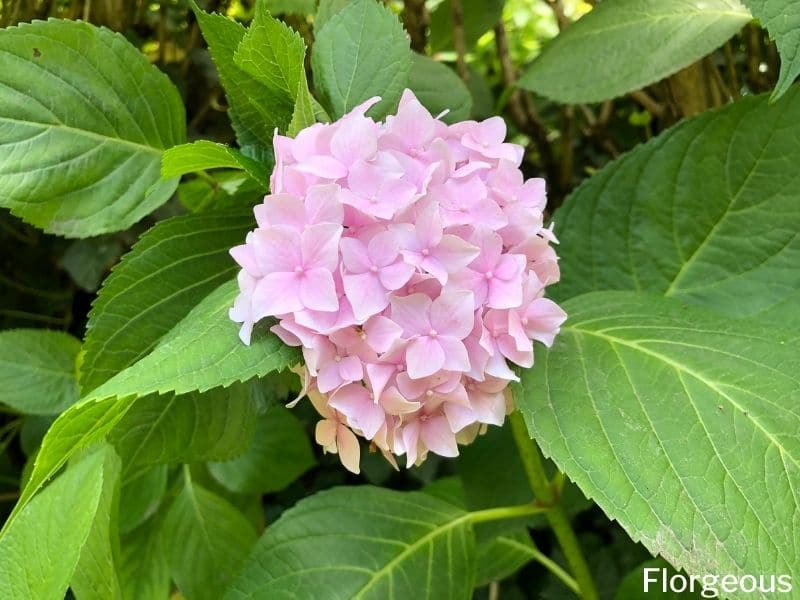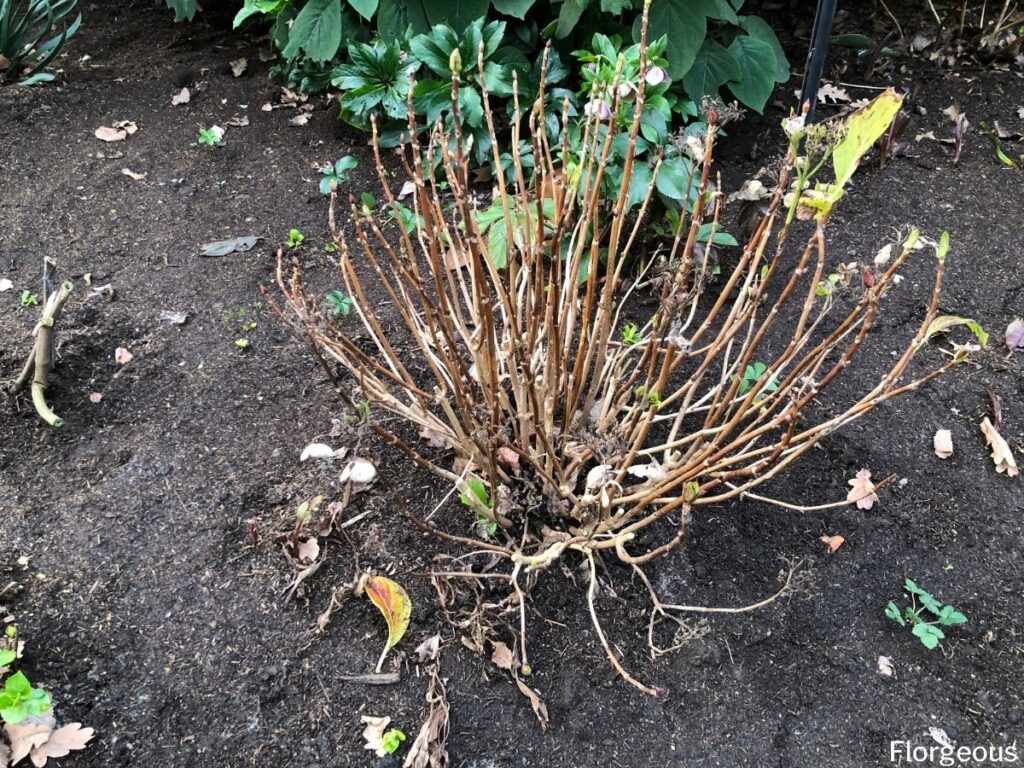Are you curious about when and how to prune hydrangeas? Whether you just started growing these gorgeous shrubs or you’ve been doing it for many years, understanding the ins and outs of tending to them is essential.
The answer of when and how to cut back your plants, however, isn’t always cut and dry. That’s because the how, when (and even if) your hydrangea bush needs pruning is determined by its types.
In this article, we’ll break things down for you.
When Should Hydrangeas Be Pruned?
There are two types of these gorgeous plants – those that flower on old growth and those that flower on new growth. There are also new varieties that are called “reblooming” – they can bloom on both new and old wood.
Why is this important? Depending on which type you have, you may not need to prune your shrubs at all (or you may need to alter the time of year in which you prune).
Shrubs that bloom on last year’s growth, or the old wood, need to be pruned in the late summer. These include Oakleaf hydrangeas (H. quercifolia), Climbing hydrangeas (H. petiolaris), Mountain hydrangeas (H. serrata), and French hydrangeas also known as Endless Summer Hydrangea (H. macrophylla).
Plants that bloom on new wood or new growth need to be pruned in the early spring or late winter. These include Panicle (H. paniculata) and Smooth hydrangeas (H. arborescens).
Then, there are some types of shrubs that don’t need to be pruned at all – reblooming hydrangeas, also known as remontant, just need occasional deadheading or trimming of branches that are damaged, diseased, dead, or crossed.

How to Prune Hydrangeas
Pruning these shrubs is simple but again, your technique will depend on the specific type of hydrangea you are growing.
Plants That Bloom on Old Wood
Shrubs that bloom on old wood will produce buds for the following year’s flowers as the days grow shorter and temperatures cooler in the late summer and fall. Generally, you just need to do a light trimming to maintain the size, shape, and health of a plant. Avoid harsh pruning at this time – just cut back any broken or diseased branches.
Do not trim after August 1, and avoid pruning hydrangeas in the spring, winter, or fall, since you could be cutting off developing buds. Instead, just lightly tip and prune the branches as the leaves are emerging in the spring. This will encourage many new (but smaller) flowerheads rather than fewer large ones.
Plants That Bloom on New Wood
For plants that grow flowers on new wood, know that flower buds will form on the existing year’s growth. Because of this, you should prune in the early spring right as leaves are beginning to appear. Cut the branches back by a half to a third, cutting above a node.
Remove any branches that are weak, spindly, or diseased. If you’re growing smooth hydrangeas, you will want to stick to as little pruning as possible- this will encourage your pruning to produce healthier, sturdier pink flowers. If you prune aggressively, you’ll get larger flowerheads, but these may require additional support to prevent flopping.

When Do You Cut Back Hydrangeas to the Ground?
There are some people who grow smooth hydrangeas bloom for creating hedges. They often cut them all the way to the ground so they won’t be an eyesore. However, as mentioned earlier, this kind of drastic pruning will cause the flower size to increase but not the stem size in accordance – this can cause flopping.
In most cases, you shouldn’t do any pruning that’s much more than just removing dead growth. However, you may be able to get away with more intensive pruning when the plants are at least five years old. You can remove a third of the older stems down to the ground during the summer, which should revitalize it and encourage new growth.
This sort of heavy pruning should usually be avoided unless you are cutting dead or crossing stems. While plants that bloom on new wood can be pruned to the ground each fall and will emerge in the spring with new blooms, when done repeatedly, this behavior can cause the plant to slowly weaken.
When to Trim Hydrangeas
To prune your shrubs, all you need is a good pair of sharpened shears or bypass pruners. Bypass pruners work exceptionally well since the blades overlap and make a cut that reduces the likelihood of disease.
When deciding when to trim your plants, think carefully about the type of shrub you are growing as well as what overall aesthetic you are going for. Some types of hydrangeas benefit from vigorous pruning, while others need just a little haircut every now and then.
Consider the mature size of your shrubs when you plant, too – put them in an area they won’t outgrow and need heavy pruning to stay within their limits. While most kinds of shrubs can tolerate a bit of pruning every now and then, most don’t benefit from intensive pruning sessions.
Regular trimming isn’t necessary in most cases – just remove dead wood and prune once a year (and be sure to deadhead!) and your plants should continue to grow well.
FAQs
Should hydrangeas be cut all the way back?
Whether hydrangeas should be cut all the way back depends on the specific type of hydrangea and the desired outcome. Some hydrangeas benefit from being pruned all the way back to encourage new growth and blooming, while others should be pruned more lightly to preserve flower buds.
When and how to prune panicle hydrangea?
Panicle hydrangeas (Hydrangea paniculata) can be pruned in late winter or early spring before new growth emerges. You can prune them back by up to one-third of their height to encourage vigorous growth and abundant flowering.
Do you prune big leaf hydrangeas?
Bigleaf hydrangeas (Hydrangea macrophylla) typically bloom on old wood, so it’s generally best to avoid heavy pruning. Instead, remove dead or damaged wood and selectively prune branches to shape the plant and encourage airflow.
How hard should you cut back hydrangeas?
When cutting back hydrangeas, the extent of pruning depends on the specific type and the goals of pruning. In general, you can prune them back by up to one-third to one-half of their height to promote new growth and flowering.
Will hydrangeas bloom if you cut them back?
Hydrangeas can still bloom if you cut them back, but the timing and extent of pruning can affect flowering. Pruning at the wrong time or too aggressively can remove flower buds and reduce blooming. It’s important to research the specific type of hydrangea you have and prune accordingly to maximize blooming potential.







